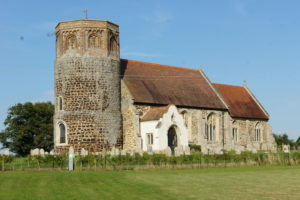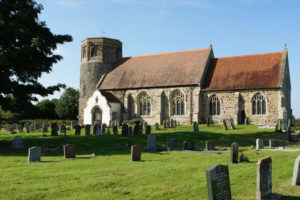
The Grade 1 listed parish church of Saint Andrew’s is recognised by many groups such as English Heritage as one of the most important medieval churches in the UK. St Andrew’s stands on raised ground slightly north of the village. The church comprises of a round tower with an octagonal belfry, a nave, chancel, south porch and north vestry.
The present church of St. Andrews was first recorded in the Tax Roll of 1246. Prior to
this was the much smaller Saxon church of St Peter, the site of which was to the west of
the churchyard. The two parishes of St Peter and St Andrew were united in 1401.
Today, St Andrew’s has a growing congregation that is involved in many community
activities. We have a good variety of worship, from family and informal services to a
more formal Holy Communion. The church is open most days, and is now a light and
airy space in which to spend a quiet period of prayer and contemplation, or just to sit
and enjoy the surrounding beauty.
The round tower is striking because of its massive size; it is believed to be the second
largest tower of its type in Norfolk. The tower is constructed entirely of conglomerate
stone; known locally as carstone. The core of the tower walls is infilled with clunch
(chalk stone). The internal diameter is 51⁄2 metres with a flattened side towards the
church. The wall, measured at the west window, is over 1 metre thick.
The south porch was added to the church in the 15th century, perpendicular period, and
has a 17th century Dutch gable front to it that is now cement rendered. The porch
underwent significant renovation during the last decade.
The chancel was restored in 1895. Re-seating took place in 1843 and 1850. On 25th April
1901 the thatched roof of the nave fell in, necessitating the complete restoration of the
church. This was carried out at a cost of £900 and the church was in use again by
October 1902, when seating was provided for 250 people on open benches of pitch pine.
The floor is partly oak wood blocks and partly Staffordshire terracotta tiles.
As part of the renovations of the porch, mentioned above, the stone tracery in several
of the chancel windows was also replaced / repaired. Part of one of the old windows can
be found reconstructed in the main room of the village hall.

